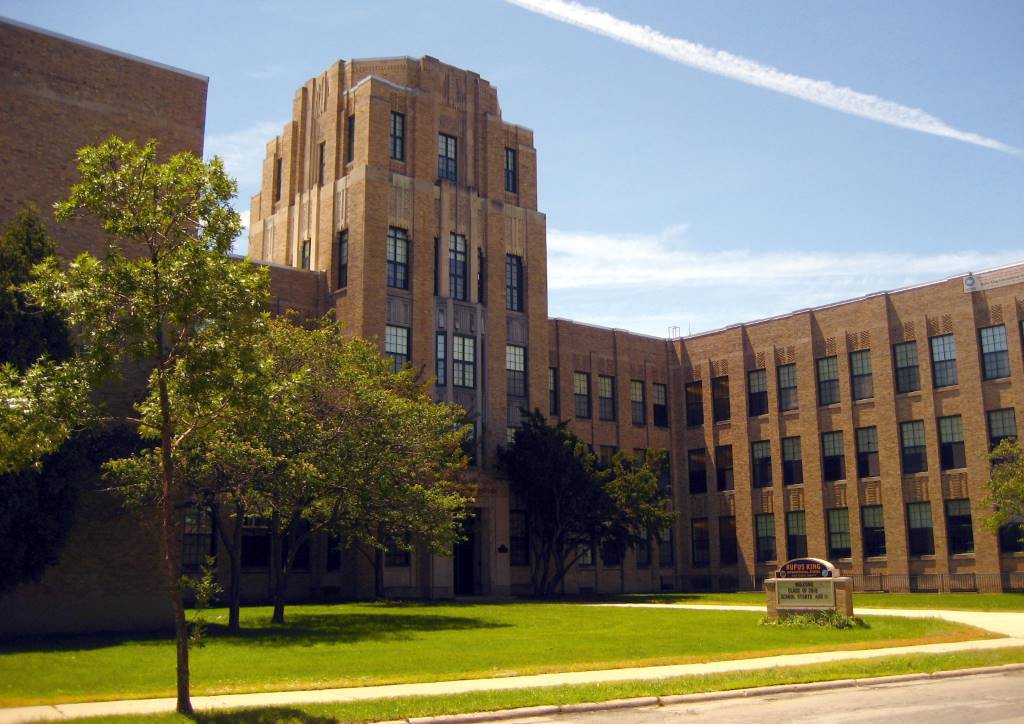Milwaukee School Board Debates Budget
Federal pandemic funding means more money to spend, but still not enough.
School budgets are never easy, even when there is additional federal pandemic funding to help pay for needs. That is what the Milwaukee school board found out at its special meeting on Oct. 25. The board made its final modification for this year’s school budget before it sent its tax levy numbers to the city’s Common Council.
District 7 Board member Henry Leonard, who represents southwestern Milwaukee, visited all the schools in his district asking principals and community members what their schools needed. He got an earful at Fairview School: it’s “overpacked,” Leonard told the board. Fairview’s building capacity is listed at over 400, but presently houses over 600 students.
Leonard’s resolution proposed to add an additional $7 million for construction at Fairview to the $1.5 million already allocated to upgrade to the school. Classrooms would be added for the 7th and 8th grades along with a new gymnasium.
MPS Superintendent Keith P. Posley supported funding for Fairview, but also requested similar money be allocated to upgrade schools on the North Side. While the North Side has been losing students, its buildings in the central city tend to be much older, needing more repairs if not outright replacement.
North-side citizens have long felt that more money is being spent for schools in white, middle-class neighborhoods on the South Side. By the same token, parents in south-side schools have stood up at school meetings and complained that more federal and state dollars go for the education of children in poverty than what they receive. Where is the equity? they ask.
Posley tried to walk the line between competing interests throughout the meeting. Leonard said he was all for spending additional money for schools on the North Side and would support recommendations by the superintendent as soon as he could bring them to the board. Other board members supported the concept as well. Leonard’s resolution passed 7 – 0 with two board members not in attendance.
District 8 member Megan O’Halloran said it was important to make these repairs, noting “King is one of our flagship schools.” Although not brought up by other directors as this meeting, there has always been tension between those supporting specialty schools and “regular” schools. The feeling by many in the community is that specialty schools are often given priority.
Posely said he would support repairs to King, but wanted to include up to eight elevators throughout the district for a total of $2.8 million. He didn’t want to skip over seven other elevators that were in need of repair while funding King. Sean Kane of Facilities and Maintenance listed the total deferred maintenance in the district at over $265 million. These include repairs to windows, roofs, boilers, parking lots, tot lots. Board members said they wanted to see the list of deferred maintenance and the priority list of the most needed.
At first, Taylor was willing to include the other elevators in the resolution, but now she backed off. She wasn’t sure whether other needs were greater than the recommended elevators. She decided to stick to her original request. “I came here for King.” She said she wanted to know more about the other elevators at a future meeting. Posely asked, what did the board need to know about the elevators? The administration had already done the evaluation. Nevertheless, the board passed Taylor’s original motion, and the superintendent agreed to come forward with additional information at the next committee meeting, not just on the elevators, but the deferred maintenance priorities in general.
As the administration went through the final budget, the equity theme could be found in various areas of the budget. For example, Beulah Brinton Community Center was opened in 1981 in the Bay View neighborhood as the first recreation center in MPS. Although other centers were planned, they were never built. Now the district was proposing another center on the northwest side next to the Obama school. The board passed its final budget that night, which included funding for this center.
The ESSER maze
Fewer building projects would have been considered if it had not been for the federal Elementary and Secondary School Emergency Relief (ESSER) funds pouring millions of dollars into schools. The funds came in three batches. All ESSER funds had to be used by September 30 in three successive years: ESSER I by 2022, ESSER II by 2023, ESSER III by 2024. Each allocation places the funds into several buckets such as accelerating learning, health and wellness, facilities, technology and other COVID-19-related needs.
Leonard is worried that the district isn’t spending the money fast enough. If the money is not spent by the set dates, the unspent money goes back to the federal government. Leonard estimated that $60 million was still sitting on the table before the board meeting Wednesday.
The school administration has a set of projects listed in order of priority. Having individual board member bringing up resolutions in how to spend that money might complicate the process. But the administration has other roadblocks as well. Supply chain issues sometimes means that projects can’t get the materials needed to execute a project. Contractors may have worker shortages, pushing projects far out into the future. Sometimes the district purchases materials far ahead of a project just to make sure ESSER funds will be spent within the required deadlines. The district may have to finish the project with its own non-ESSER funds later on. Less prioritized projects might be taken on simply because the material and manpower is available.
The bottom line: Knowing what to spend money on can be just as complicated as knowing what to cut.
If you think stories like this are important, become a member of Urban Milwaukee and help support real, independent journalism. Plus you get some cool added benefits.





















The State has a 5 billion dollar surplus yet Milwaukee does not have enough money for schools, police, the District Attorney’s office and libraries. Even though the Milwaukee area is the largest economic engine in the State benefiting the entire community including many Republican areas, the Republicans are doing what they can to degrade progress. I think the big companies that are moving to Milwaukee need to change their automatic support for Republicans and demand that Milwaukee gets it fair share of tax revenue.